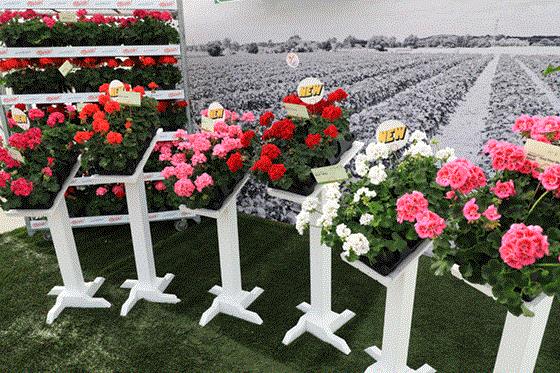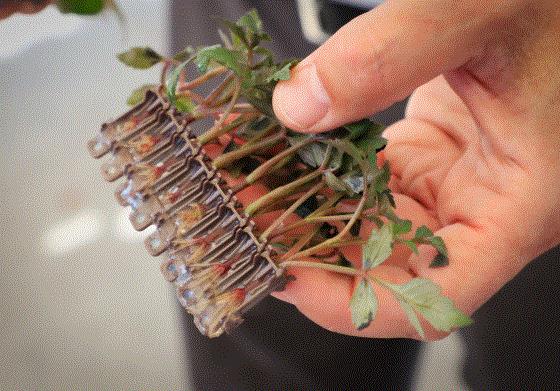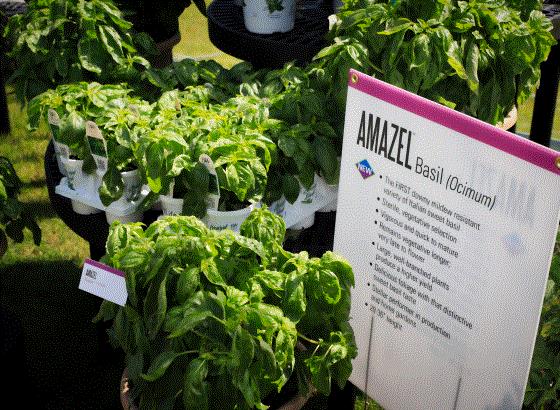How was last weekend? Good! (Finally!)
Twenty nine scores of 10, out of 113 scores total, or 26%—that’s how good April 28-29 was. And only one 1! The average score for the U.S. was 7.6, a nice step up from the 6.5 of the previous weekend and the 4.1 from the weekend prior to that. Canada is still soft, at 6.0, but still up from the 5.4 and 3.5 of the previous two weekends. Spring is here, my friends—or at least it’s really close.
Here’s the map:

This week’s results are based on 110 ratings from 44 states and five provinces. (If your state or province is white on the map, it means nobody sent me a score from there—so help me out next time!)
A mixed bag
Now, could that nice influx of 10s have been an overreaction to two weeks of 0s? Sort of a giant sigh of relief? Perhaps. But hey, you’re entitled to a bit of joy after so much misery. And the high scores were consistent: for instance, North Carolina scores four 10s. Oklahoma scores three 10s. Missouri scores three 10s and an 8. Kansas scores three 10s and a 7. Tennessee scores two 10s. Georgia scores two 10s … and a 4.
It was still rough in New England, which scored the lowest as a region (6.1) in the U.S. (Highest was the South at 9.0.).
Ohio is one of the most mixed state in the country, with five scores ranging from 2 to 8, for an average of 4.8. New York was similar, with five scores ranging from 2 to 7, for a 4.9 average. Vermont rated from 1 to 7, for a 4.2. My current home state, Illinois, was another mixed bag, with scores of 10, 8, 6 and 6, for 7.5.
Canada was a mixed bag, as well. British Columbia and Ontario were the only provinces with multiple scores; BC ranged from 4 to 9, for a 7.3 average, and Ontario ranged from 4.5 to 9 for a 6.4 average. Quebec scored just a 2, while Alberta and the Atlantic region scored 7.5 and 7, respectively. But with the exception of BC, which can get off to an early start, Spring in Canada usually lags behind the U.S. by a week or so.

One good day, one bad day
A common thread among many states was a great Saturday and a miserable Sunday, or vice versa. I had several folks send me separate scores for each day—such as 8 for Saturday and 1 for Sunday, which I average out to 4.5. I think New Hampshire, Vermont, Maine, Connecticut, New York and Ontario all received those exact split scores, which could make the weekend seem worse than perhaps it really was. For instance, in the case of the first three states, the weekend score was 8 for wholesale growers (who shipped lots of material) and 1 for retailers (for whom sales aren’t quite yet happening).
What percent is Saturday vs. Sunday?
Personally, I believe Saturday is the more important day of the weekend for gardeners. But this is just my gut feeling … I’d love some confirmation (or evidence to the contrary) of that from you. If you happen to track your sales by day of the week, I’d like to know what they are, percentage-wise, Monday through Sunday.
If you have this and are willing to share, I’d greatly appreciate it. Might even help me make my survey more accurate—for instance, if Saturday sales tend to be double Sunday’s sales, then that 4.5 would be more like 6 or 7.
Send me your info HERE.
What's a mud bug? (I get the cold beer part)
Some favorite comments about the weekend (score is in parentheses, if not mentioned in the text):
Minnesota: “Spring finally came to Minnesota. Two weeks ago, we were buried under our record April snowfalls (yes, we did go snowmobiling one more time), and now we are sitting at a comfortable 74 degrees. We had fantastic sales this weekend and the forecast looks solid. We give this last weekend a 10!”—Aaron Davis, Green Valley Greenhouse
Wisconsin: “Finally a decent weekend. Still could have been better. I think people are still a bit shy because of the weather.”—Chris Williams, K&W Greenery (7)
Oklahoma: “Crazy busy.”—Bill Sears, B&R Greenhouse (10)
Washington: “The only thing keeping this weekend from being a 10 was a rainy start to Saturday that put the brakes on customers picking up bulk soils, compost and the like. Otherwise, we were very busy helping customers pick out flowers, shrubs and trees despite the rain!”—David Vos, Vander Giessen Nursery (9)
Colorado: “Boom or bust. Last week was boom. We made up all sales that were behind in early and mid-April.”—Gene Pielen, Gully Greenhouse (9)
Wyoming: “We blew last year’s weekend away! The weather was almost perfect, and we did 3x-plus in sales! Looking like a great spring ahead!”—Holly Cassity, Sweetwater Garden Enterprises (10!!!!)
Ontario, Canada: “Considering the weather, it was great. We had a trickle of folks blow in on the icy wind—solid freeze and a whisker of overnight snow. Today it’s 70F, for the first time! In our neck of the woods, we really haven’t lost much time yet. We just won’t sell as many pansies. We’re looking forward to a super spring selling season!”—Joanna Steckle, Steckle’s Produce & Flowers (6)
Louisiana: “Great weather for yard work, mud bugs and cold beer.”—William Massey, Beams Farms (10)

A few Spring Trials observations
Just some random thoughts off the top of my head a couple weeks after the event ended, because it often takes that long for Spring Trials to sink in. It’s not an inclusive wrap-up by any means:
- It was the year of the salvia, dianthus, gaura, begonia and sunflower. Especially salvia: I counted at least six salvia introductions, mainly perennial, many of which being hybrid crosses between two species. Which is confusing. Which parent brings what traits? What does it do in the landscape. Our trial hosts didn’t always know, which leaves me reporting on height and flower color. I’m equally confused by all the different kinds of annual and perennial dianthus available. I need to try more of them in my own garden to get to know them better. (Thankfully, I just received a trial box from a breeder containing a salvia AND a dianthus!)
- There were no big breakthroughs that will change our industry or your life (except maybe for lily growers, below), but there were some good additions to existing lines. New colors in popular series are always an easy add-on sale, and we saw them in Wave (not new colors, but serious improvements to Easy Wave), SunPatiens (pictured), Profusion Zinnia, Canna South Pacific, Confettis (Dümmen Orange’s multi-liner program), Superbells and Supertunias, to name several.


Observations (cont.)
- Noteworthy I: Syngenta’s Calliope hybrid geraniums are quite popular, especially for their unique Dark Red. Now they’ve added a similar hybrid series called Moxie, which is a compact version of Calliope. And yes, it features the same good Dark Red color.

- Noteworthy II (if you’re a lily grower): New fast-growing genetics from 2Plant International, the distributor (along with Zabo Plant) of the “Lily Looks” breeding from Mak Breeding in the Netherlands. They showed a genetically dwarf LA hybrid lily (no PGRs needed!); a yet-to-be-named, naturally compact Easter lily that blooms in 78 days—three weeks earlier than Nellie White; and a new Oriental lily called Speedy that blooms in 55 days instead of the usual 90 to 100 days … and again, with no PGRs needed. All breakthrough stuff if you’re a lily grower.

Observations (cont. some more)
- Noteworthy III: I was happy to see Dümmen Orange getting on board with AutoStix, the new URC transplanter designed by Visser. Only Dümmen is putting roots on their cuttings and shipping them into North America coated with gel. Called Basewell, the idea is to do the rooting offshore so you don’t have to tie up valuable greenhouse space for propagation. They’ll be offering virtually all their spring annuals in 51-count AutoStix strips. There are many, many questions yet to answer, however, including how they can guarantee 51 healthy cuttings in every strip; how the roots will hold up to transplanting; the economics of using AutoStix to plant into finished pots instead of propagation trays; and the pricing. I’ll be digging into those details first chance I get, but count this as another sign that automation is coming to vegetative plants.

Last observation
- Noteworthy IV: Proven Winners is now into succulents—and finally into veggies! We wondered when there’d be a Proven Winners vegetable line, and now there is: Proven Harvest is their line of edibles that offer “stories and success.” In other words, they don’t plan to introduce me-too tomatoes. First offerings include a downy mildew-resistant basil called Amazel and a pair of tomatoes (Garden Gem and Garden Treasure) said to have the durability of a hybrid and the flavor of an heirloom (Google for their interesting backgrounds). Both, by the way, are from my alma mater, the University of Florida. Go Gators!

Just a reminder: If you missed our six days of comprehensive coverage, it’s all archived—words, photos and links to our 38 videos—at www.springtrials.com.
By the way, I just checked, and our 38 Spring Trials videos have more than 30,000 views!
Registration open for AAS/NGB Summer Summit
Some of the introductions I mentioned above just happen to be All-America Selections winners, making for a good segue to the announcement of the organization’s Summer Summit, slated for October 2-5 in lovely New Orleans. What a great horticultural excuse to visit Louisiana!
This gathering of the home garden industry will feature “an immersion into New Orleans culture,” plus the New Orleans Botanical Garden, Louisiana State University’s Rural Life Museum and Burden Botanical Gardens, plus amazing dinners and loads of networking opportunities.
Learn more and sign up at https://all-americaselections.org/aas-meetings-events/.
LEDs for sole-source propagation webinar is archived
If you missed it, or want to see it again, last Tuesday’s webinar is archived at the usual spot, www.growertalks.com/webinars.
Titled, “LED Lighting for Sole-Source Propagation,” it’s an introduction to using nothing but LED lights to grow your seedling plugs or rooted cuttings. Why would you do that? Well, if you’ve propagated using sunlight, you’ve been using sole-source lighting for years. Only, sunlight is notoriously variable, due to seasonal daylength and ever-changing weather conditions. LEDs remove those variables while providing the exact spectrum your crops need for optimum growth.
It's fascinating technology that’s still in its infancy. Get in on the ground floor!
Special thanks to sponsor Philips Lighting (now going by its new name, “Signify”).
See you next time!

Chris Beytes
Editor
GrowerTalks and Green Profit
This e-mail received by 22,980 loyal readers!
Thanks to my loyal sponsors, who help me reach the 22,980 readers of Acres Online in 66 countries. Want to be one of them (a sponsor, that is)? Give Paul Black a shout and he'll hook you up.